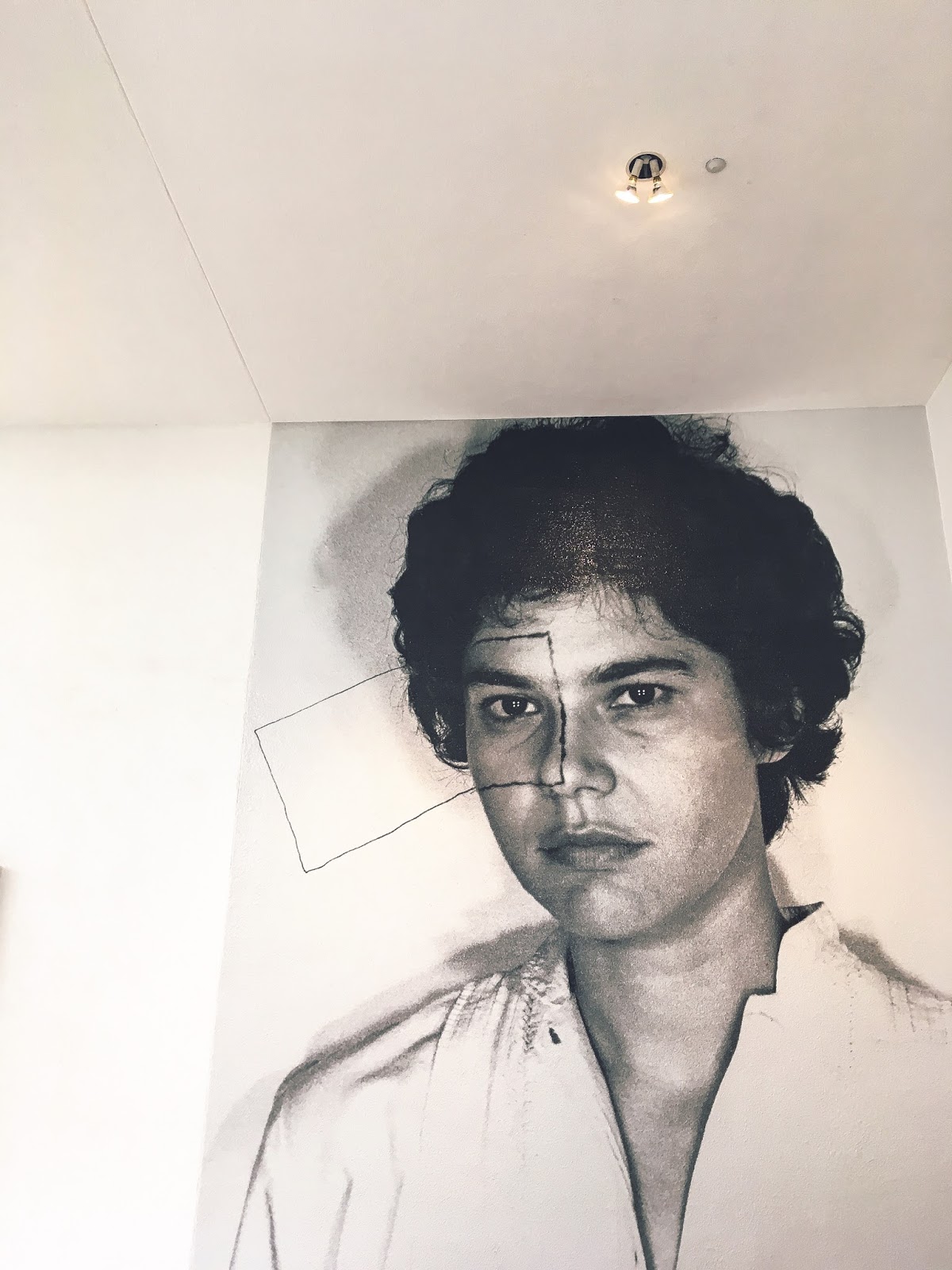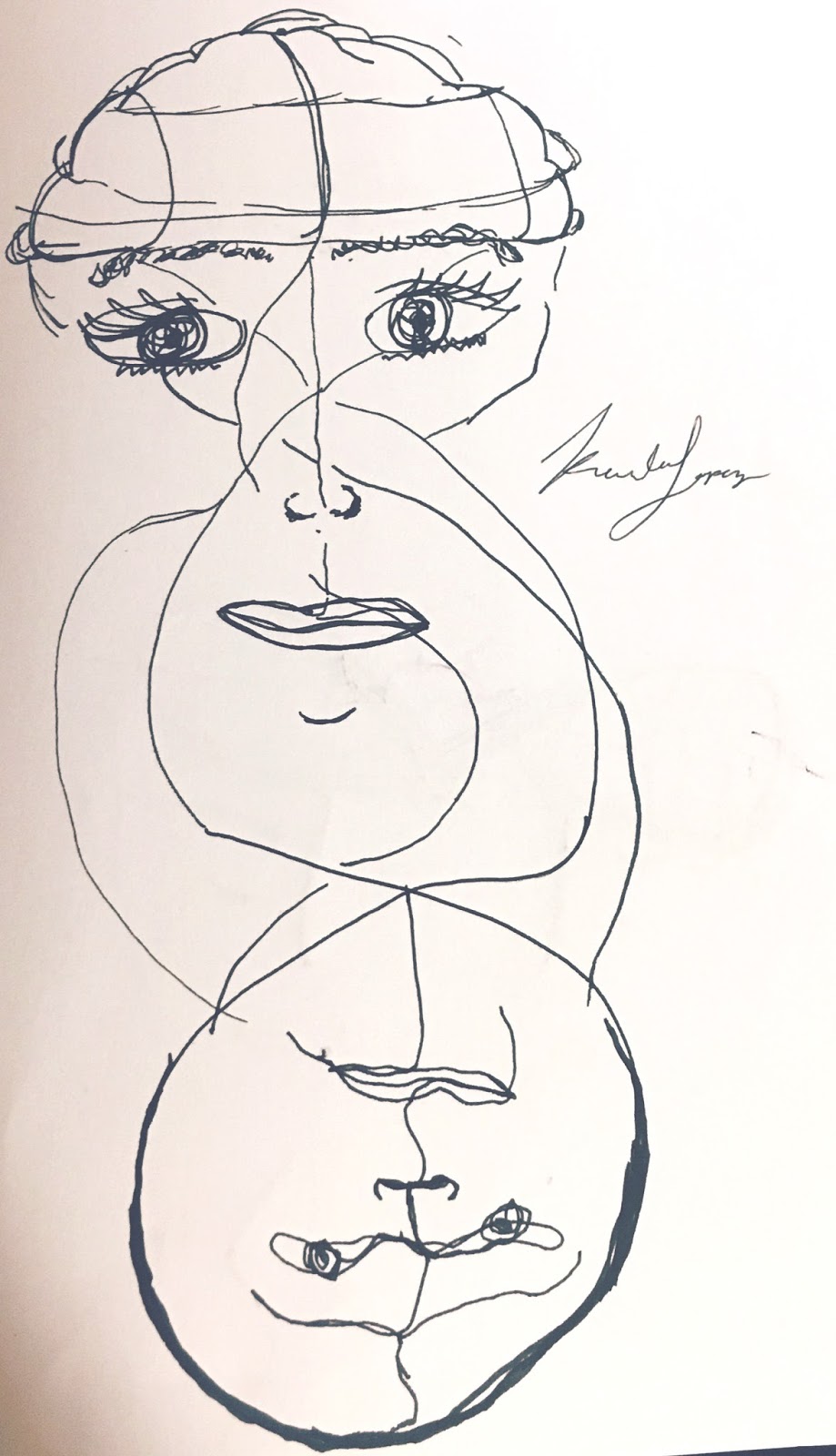Nov. 17 2017 | Radical Women: Latin American Art, 1960-1985 // Hammer Museum |
The art which reflected the political and social tensions during the rise of attention towards patriarchy and the politicization of the feminine body. The dictatorship of various Latin American countries is seen to be exhibited in the contemporary art as well.
Walking into the museum, the self-portrait of Liliana Porter (pictured above) brought the attention of many. People stood in front of the self-portrait in awe, the composition of the photo and the drawn square on Porter's face distinguished it from any other portrait. The "enclosed" eye symbolizes the objectification of the parts of an individuals body, the importance of beauty and women's hardship in keeping up with those standards.
The point of objectification of women's body is seen through Margot Romer's "Apparato Reproductor de la Mujer" (pictured above). Here the idea of an object containing a relation to the women's body, the objectification is twisted to depict the different parts of a women's reproductive system. Hence, the list on the door with the various components which make up the reproductive system. The red door coincides with menstruation, and the prickly cactus resembles the vagina.
Throughout the art stroll, comprehension of the pieces incited empowerment and appreciation for art. Note taking occurred at some point of the visit since individual pieces stood out and the meaning behind them was too good to be left behind from my memory.
Here are the different art pieces I noted in the available spaces of the museum brochures with a pencil:
(Bolded names of artist signifies the art pieces which attracted me off the bat)
(Bolded names of artist signifies the art pieces which attracted me off the bat)
Magali Lara: Ventanas
- 1977; eruption of feminine and feminine discourse
Vera Chaves Barcellos: Epidermic Scapes
- 1977-1982; different textures of skin, comparable to landscape
- Theme: Body Landscape; symbol of cultural loss
Rula Weiss: Ciduael Mujer Ciduael
- 1947-1950; pop art film of feminine body
- Theme: Body Landscape; women's way of reacting to the environment
Analivis Cordeiro: Cambiantes
-Concretism movement: in response to Cuban dictatorship 1964-1985
-Theme: Mapping the Body; radical change on how the body was represented
Sandra Llamo: Mejia- in pulso
- Measuring emotions via electrocardiography
- Theme: Mapping the Body; measuring a part of the body in a "scientific way"-- facts
Anna Maria Maiolino: Mapas
- Inspired by philosopher Lacanian
- Relational subjectivity of geographical map of familial and spiritual relations
- Political violence in Brazil as well
Ana Mendiela: Rape Scene
- 1973; realistic expression of rape scene at University of Iowa
- Feminist agenda of raising issues of violence and defenseless
- Validating emotions and taking a stance
Monica Mayer: Lo Normal
- Pokes fun at social criteria of sexual normalcy
- Theme: Feminism; empowerment of sexuality
Josely Carvalho: The Brazil
- 1981; Crayon drawing
- Highlights the women's body during pregnancy
Lygia Pape: Eat Me
- A short film of two men's lip up close chewing and swallowing
- Highlights the Brazilian cultural; metaphor of anthropography which is the idea of devouring something to absorb energy
Art is a form of medium that needs to be appreciated far more because of the historical significance behind the art pieces.
The Latin American radical women art exhibited encompasses the idea of identity overall especially those of Latin American descent like myself.
It is insightful to learn about one's culture through artists even if it doesn't contain a personal connection like family stories.
Sources:
Hammer Museum - Website
Radical Women: Latin American Art Info - Hammer Website





Comments
Post a Comment